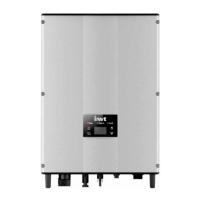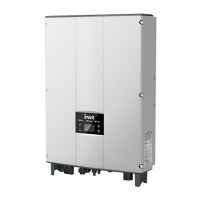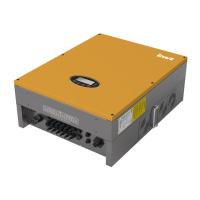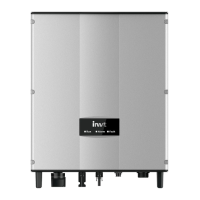What to do if there is a Grid Loss on my INVT iMars Inverter?
- MMadeline SuttonSep 8, 2025
If the INVT Inverter shows 'Grid Loss', the suggested solution is to check if the inverter AC connection is well.
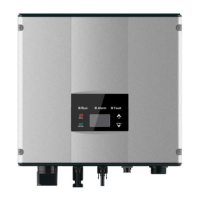
What to do if there is a Grid Loss on my INVT iMars Inverter?
If the INVT Inverter shows 'Grid Loss', the suggested solution is to check if the inverter AC connection is well.
What does Grid UV mean on my INVT iMars?
Grid UV on your INVT Inverter means there is low voltage of the public grid, resulting in AC undervoltage.
What causes Input OV on an INVT iMars Inverter?
The Input OV error on your INVT Inverter is due to DC input overvoltage, resulting in input overvoltage.
What does ILeek Fail mean on my INVT Inverter?
If the INVT Inverter displays 'ILeek Fail', it indicates a huge leakage current of the system or inverter. The suggested solution is to check for huge leakage current of the system or inverter.
What does OTP mean on my INVT iMars?
If the INVT Inverter displays 'OTP', this indicates an internal over temperature condition.
What does Grid OF mean on my INVT iMars Inverter?
If the INVT Inverter displays 'Grid OF', it indicates a high frequency of the public grid. The suggested solution is to check for high frequency in the public grid.
What causes Relay Fault on INVT iMars?
The Relay Fault error on your INVT Inverter is due to an internal relay fault, resulting in relay fault.
What does Incnst mean on INVT iMars Inverter?
Incnst on your INVT Inverter means there is inconsistent grid voltage, frequency, leakage current or AC/DC injection, resulting in data consistency fault.
What does PowerReversed mean on my INVT Inverter?
If the INVT Inverter displays 'PowerReversed', it indicates that the DC power is reversed. The suggested solution is to check the DC power connection.
What does Bus UV mean on INVT iMars?
Bus UV on your INVT Inverter means there is DC input, resulting in bus undervoltage.
Explains warning symbols and their meanings for safety.
Provides essential safety rules for installation, operation, and maintenance.
Describes the photovoltaic system components and application.
Details the physical layout and external components of the inverter.
Explains the information presented on the inverter's identification nameplate.
Lists the available models of the iMars grid-tied solar inverter.
Provides the physical dimensions and weight specifications of the inverter.
Outlines the procedure for checking the inverter and accessories after unpacking.
Lists necessary preparations and requirements before commencing installation.
Details the steps for the physical mounting of the inverter.
Provides comprehensive guidelines for the electrical connections of the inverter.
Specifies the essential checks required before the inverter is put into operation.
Describes the procedure for starting and operating the inverter while connected to the grid.
Details the correct procedure for safely shutting down the inverter.
Covers routine checks and maintenance tasks to ensure inverter longevity.
Explains the meaning and status indicated by the inverter's LED lights.
Describes the function of the buttons and layout of the inverter's control panel.
Details the information displayed on the inverter's Liquid Crystal Display.
Guides users on accessing and utilizing the inverter's various operational functions.
Instructions on selecting the appropriate grid certification for the inverter.
Details the standard method for connecting the inverter for monitoring purposes.
Describes optional communication modes like Ethernet, WiFi, and GPRS.



